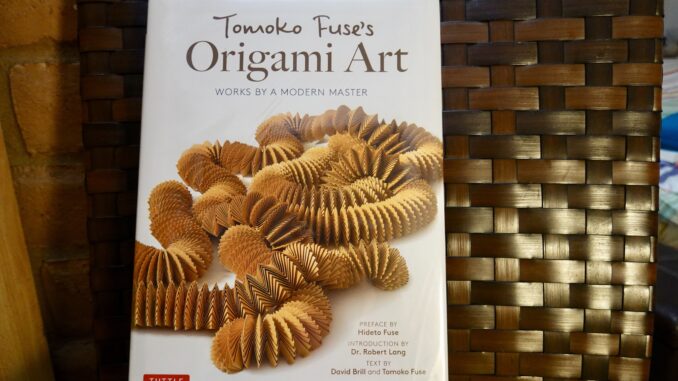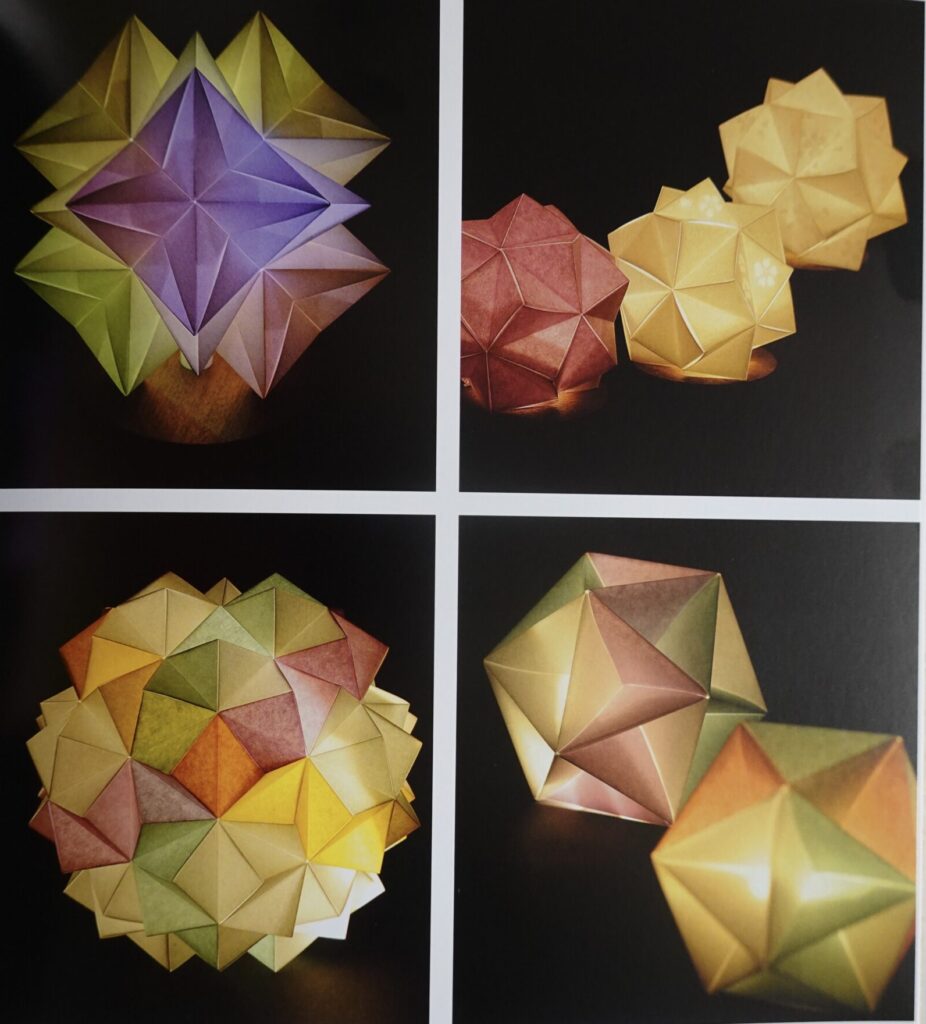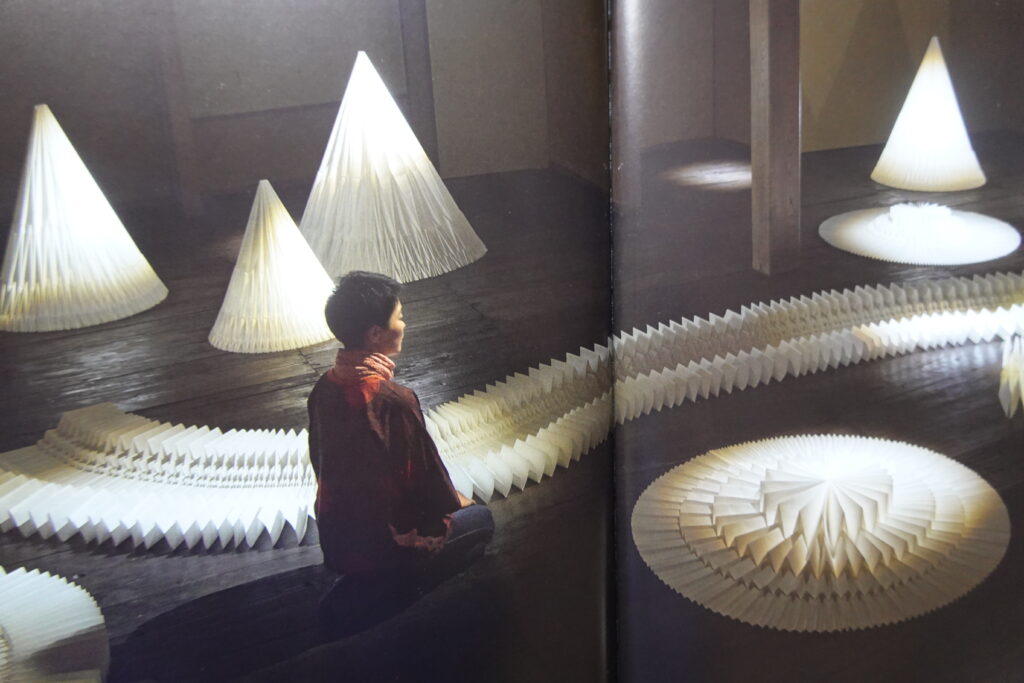
TOMOKO FUSE’S ORIGAMI ART
Preface by Hideto Fuse
Intro by Dr. Robert Lang
Text by David Brill & Tomoko Fuse
Oversize hardcover, 193 pages, 2018.
Tuttle Publishing
GET THE BOOK – https://amzn.to/3YsCaS3
I recommend you visit the library to check out books. If you buy your own copy, I can earn a small commission if you use my Amazon affiliate link.
It’s hard to believe, but the cover design is made out of paper.
In 1986, Tomoko Fuse began her practice of origami professionally. She was quickly recognized for her modular origami designs that can be abstract or functional—all brilliantly beautiful.
Tomoko, age 69, did not go to school. She dedicated her whole life to origami. She is a renowned master who elevated the Japanese art of paper folding beyond the traditional.
In five chapters, we marvel at Tomoko’s incredible paper forms: nodes, tessellations, endless folds, multiple folds, and illuminated. She creates geometric shapes, coils, tubes, snakes, tapestry, complicated weave patterns, and structures that can flatten, twist, or fan out.

At each page, it’s hard not to be incredulous and think, “How can this be paper?!”
Origami is as old as paper, 330 years old. It has rules. You begin with a square paper then you fold in particular places in a particular order to form a shape. Precision is critical. It requires focus, patience, and dexterity. One mistake changes your options.
“As we begin to fold, the field of possibilities begins to narrow until only that particular form becomes possible. But if we get it right, the result leaves us breathless,” says Tomoko.
“There is a grace, an elegance, and, most of all, a richness of texture that is nearly overwhelming. Her folded forms are intensely detailed, with hundreds, if not thousands, of interlocking folds,” writes Dr. Lang in the introduction.
Tomoko is a master because she knows the rules but she experiments and innovates. Her openness to possibilities allows her to discover new creations within what already exists.

“My goal is never to impose a shape of something onto the paper, but rather the reverse, to discover the amazing forms that slowly take shape as I proceed to fold it. This is what truly fascinates me,”says Tomoko.
At the end of the book, readers can try their hand at some of Tomoko’s patterns. A great photo book for origami enthusiasts.
@IvyDigest



